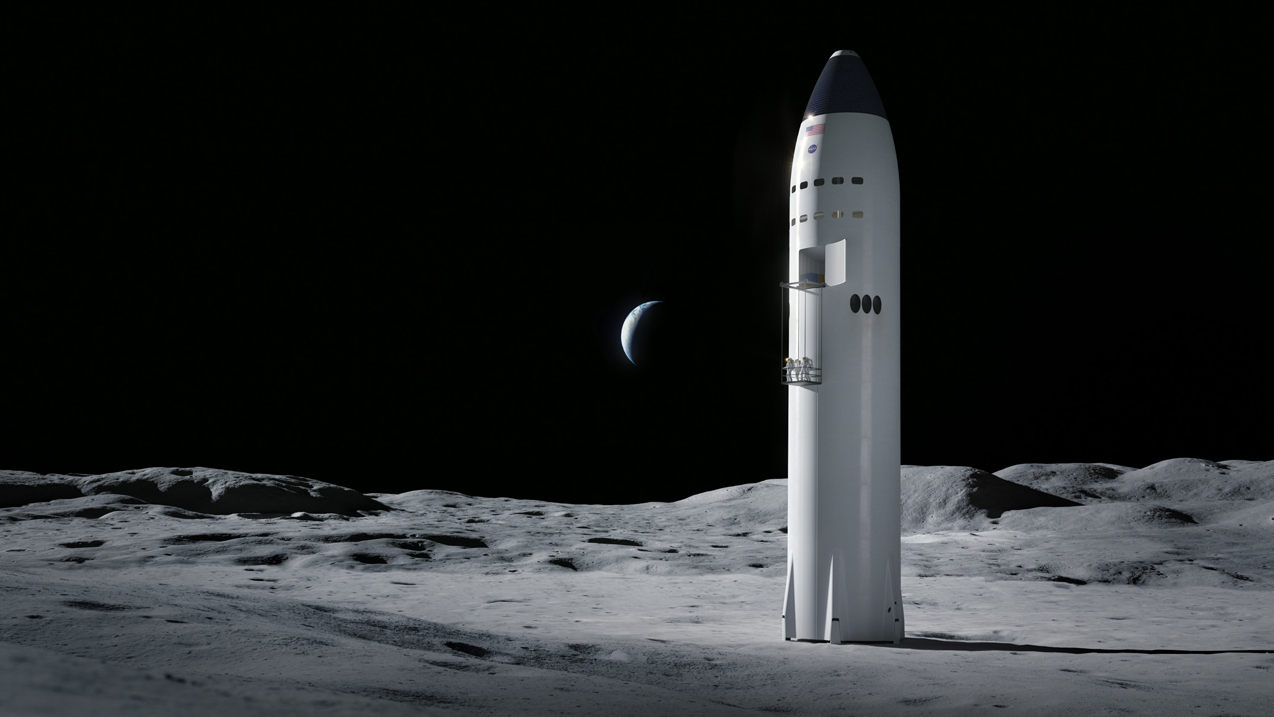NASA's $25.4 billion budget for 2023 includes funding for second moon lander alongside SpaceX Starship
NASA will receive $25.4 billion in 2023, less than the White House's request.

NASA can proceed with finding a second moon lander besides Starship.
Congress approved $25.384 billion for NASA in its $1.7 trillion omnibus bill passed Dec. 23, including full funding for a second Artemis program moon lander to supplement SpaceX's Starship, according to SpaceNews.
The overall allocation, however, is less than the nearly $26 billion White House request put forward in March.
Two main teams have signed up to offer Human Landing Services for the moon in the latest solicitation, which closed Dec. 6. Blue Origin leads the bid for their "National Team," which also includes Lockheed Martin, Draper, Boeing, Astrobotic, and Honeybee Robotics. Northrop Grumman is on a tea led by Leidos Dynetics.
Congress tasked NASA to find a second company following a troubled HLS bidding process in 2020-21 that saw SpaceX selected as the sole entrant, which sparked protests and an overturned lawsuit.
Related: NASA's Artemis 1 moon mission explained in photos
NASA's allocation is 5.6% more than the $24.041 billion the agency received in fiscal year 2022, but at current inflation rates the agency has fewer dollars to work with compared to last year.
Get the Space.com Newsletter
Breaking space news, the latest updates on rocket launches, skywatching events and more!
While NASA's exploration program and space operations effectively received full requests, science did not.
"Science overall gets $7.795 billion in the bill, nearly $200 million below the request. Planetary science and heliophysics get slightly more than requested, while astrophysics, Earth science and biological and physics sciences suffer cuts," SpaceNews wrote.
Near Earth Object Surveyor was one of the more notable changes, receiving $90 million (more than double the $40 million NASA request) in an effort to bring it into space sooner rather than later. NASA announced Dec. 6 that the mission had passed a key decision point on its road to space.
Congress expressed concern about NASA's plans to delay the launch to 2028, noting the agency is behind on its mandate to find 90 percent of objects roughly 460 feet (140 meters) in diameter. But agency sources told SpaceNews the extra money is not enough to launch on time in 2026.
Elizabeth Howell is the co-author of "Why Am I Taller?" (ECW Press, 2022; with Canadian astronaut Dave Williams), a book about space medicine. Follow her on Twitter @howellspace. Follow us on Twitter @Spacedotcom or Facebook.
Join our Space Forums to keep talking space on the latest missions, night sky and more! And if you have a news tip, correction or comment, let us know at: community@space.com.

Elizabeth Howell (she/her), Ph.D., was a staff writer in the spaceflight channel between 2022 and 2024 specializing in Canadian space news. She was contributing writer for Space.com for 10 years from 2012 to 2024. Elizabeth's reporting includes multiple exclusives with the White House, leading world coverage about a lost-and-found space tomato on the International Space Station, witnessing five human spaceflight launches on two continents, flying parabolic, working inside a spacesuit, and participating in a simulated Mars mission. Her latest book, "Why Am I Taller?" (ECW Press, 2022) is co-written with astronaut Dave Williams.









